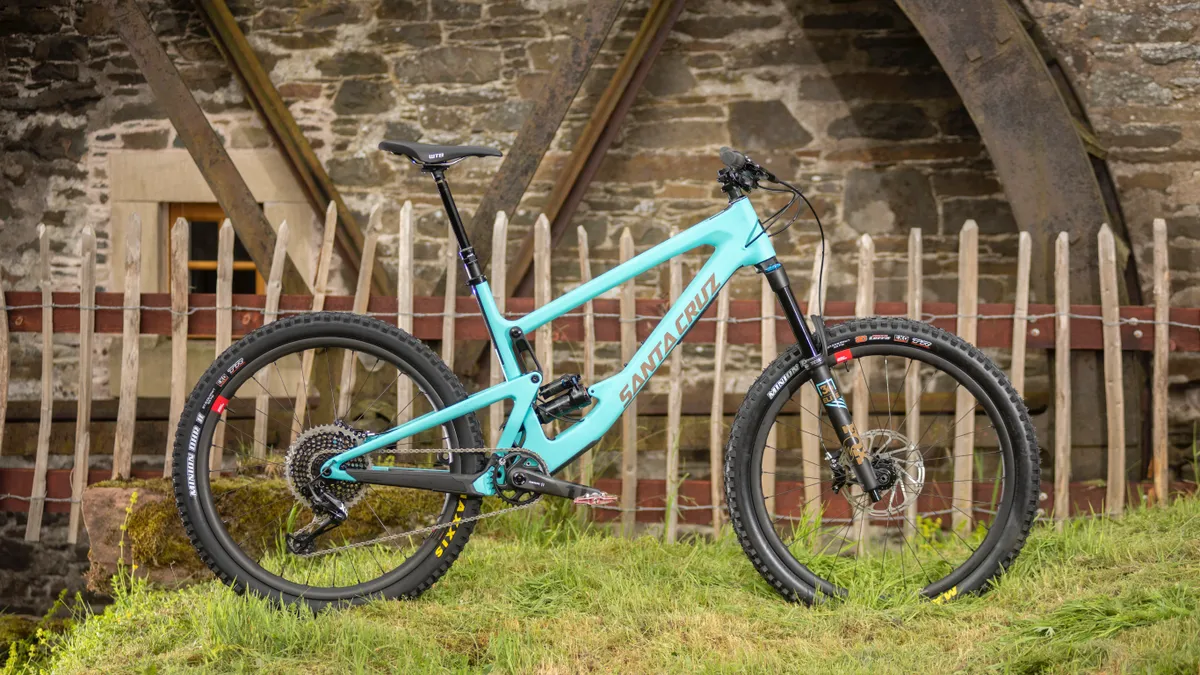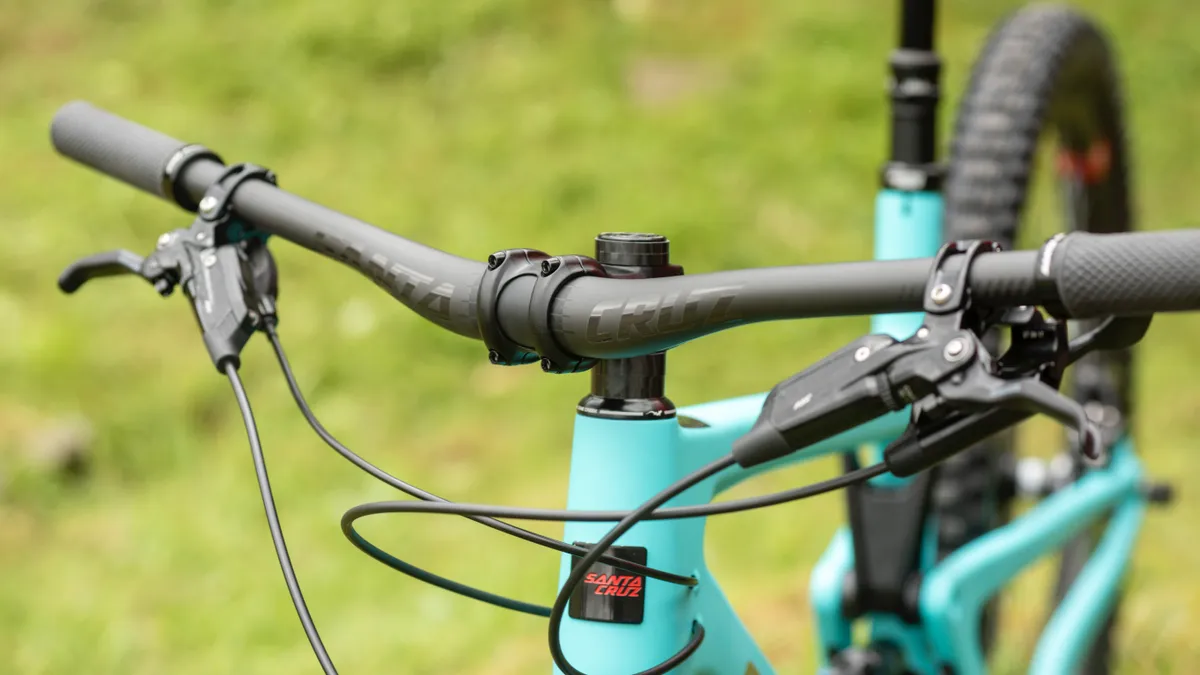Big wheeled bikes might be taking the limelight at the moment, but there’s still plenty of space for 27.5in wheeled bikes when it comes to having maximum fun on a bike, and the Bronson, and its sister, the Juliana Roubion, is out to prove it.
- Santa Cruz and Juliana release new 5010/Furtado and Bronson/Roubion
- Six things to know about the Santa Cruz Hightower LT
The Bronson CC X01 Reserve uses Santa Cruz’s top end CC frameset, along with its Reserve carbon wheels. The groupset, as you might imagine, is based around SRAM X01 Eagle.
The Bronson frameset is all-new and now comes with the lower-link driven shock VPP linkage, which we first saw on the Nomad released in 2017. We found then that this gave an even more supple ride, with a lower centre of gravity for the frame.
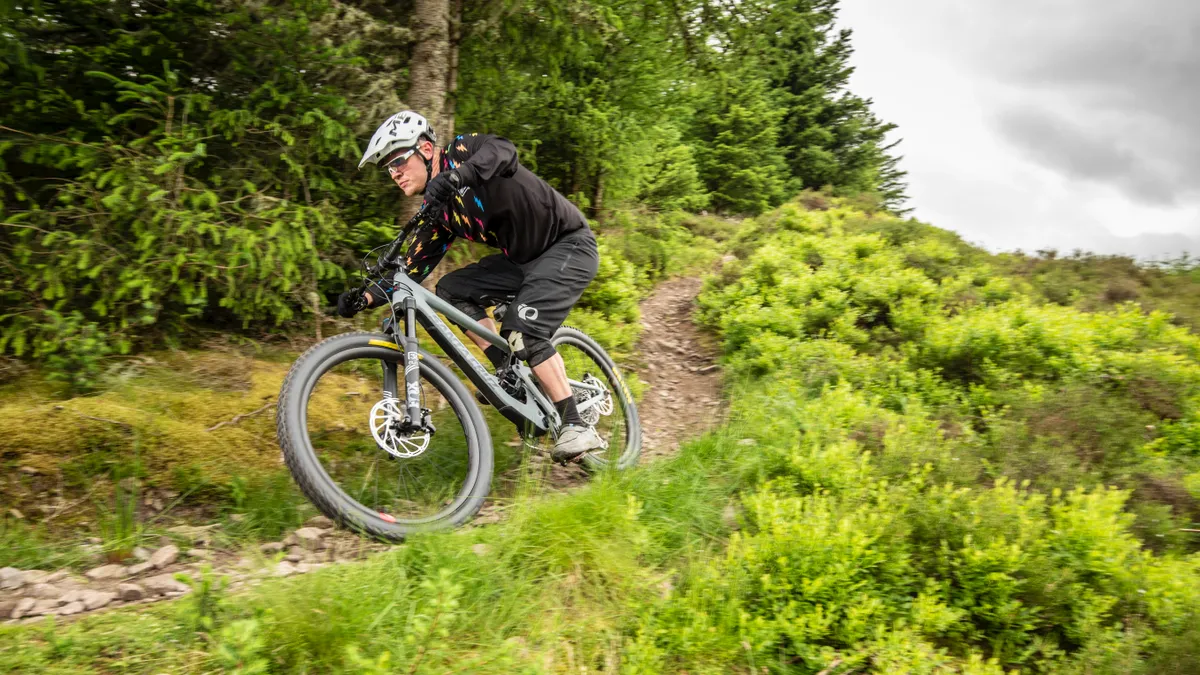
Santa Cruz Bronson highlights
- 150mm frame travel, using the Lower Link VPP system
- 27.5in and 27.5 Plus compatible
- 160mm Fox 36 fork, 200/180mm rotors
- Santa Cruz’s own Reserve 30 carbon wheels
- 15mm longer reach, 1-degree steeper seat tube, 10mm lower standover
- Juliana’s Roubion shares same frame and general build
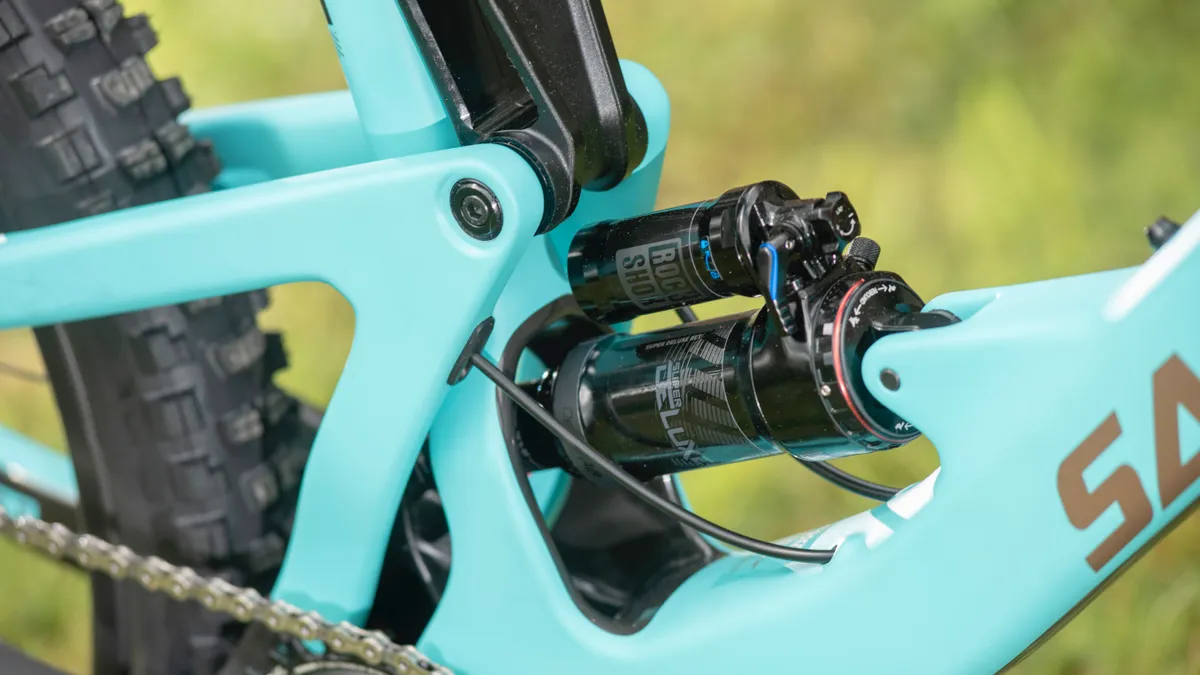
The shock sits low in the frame
Virtual pivot points
The frame provides 150mm of travel via Santa Cruz’s venerable VPP design. This means that the rear triangle is joined to the front triangle via two links, which rotate in opposite directions as the frame moves through its travel.
Previous iterations of the Bronson (and as you see on many other models) had the shock driven by the top link, but it has joined the Nomad now by having the shock driven by the lower VPP link.
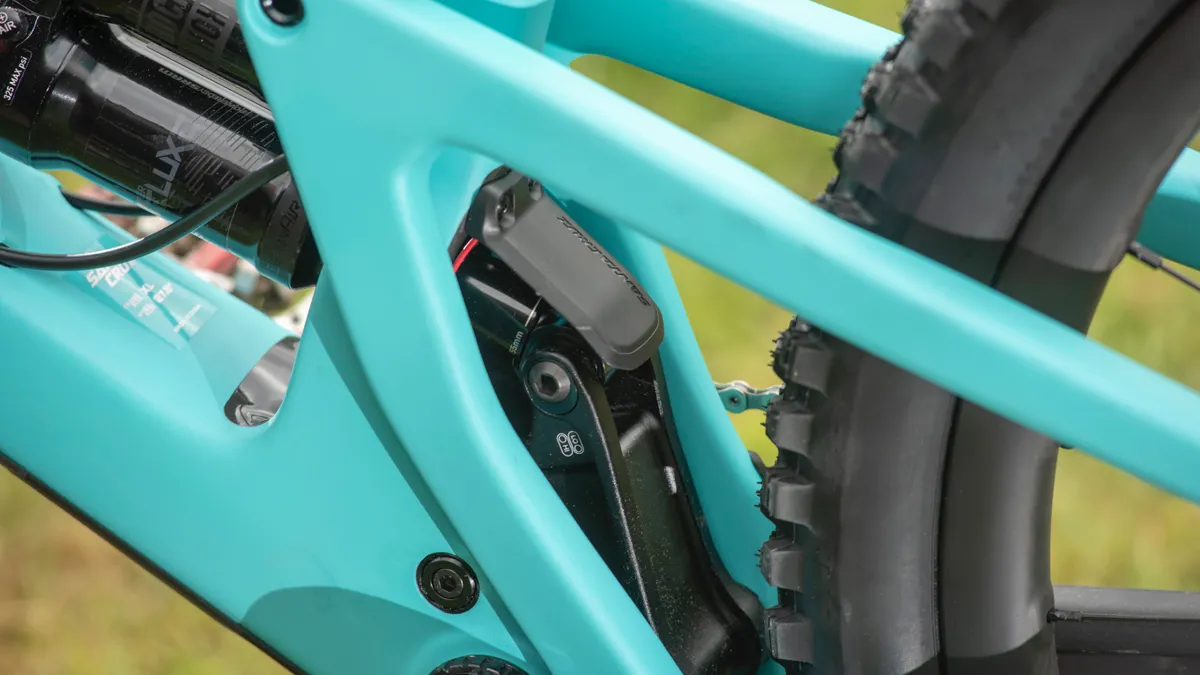
This is because Santa Cruz says it’s easier to tune the suspension with a descent focus with this layout. The linkage gives a very supple ride and is relatively linear on the Bronson through its travel, meaning it is designed for air shocks, not coil — air shocks themselves increase in progressivity towards the end of their travel more than a coil shock does, providing that control at the end of the stroke.
Out and about
There’s no doubt that this design has its merits, because the Bronson’s back end is incredibly impressive.
Having ridden the Nomad, I expected its climbing ability to shine, and I wasn’t disappointed. I’ll admit to preferring big wheels, but the relatively low pressures I was running through the 2.4in Maxxis Minion DHR WT, combined with the action of the rear suspension made for a bike that seemed relatively invincible on most climbs.
The suspension remains calm when you’re spinning up a climb, avoiding any mid-stroke wallow that can suck the life out of some descent-focussed bikes. At the same time, the bike seemed to cope with trail chatter very well, maintaining traction on technical and steep climbs.
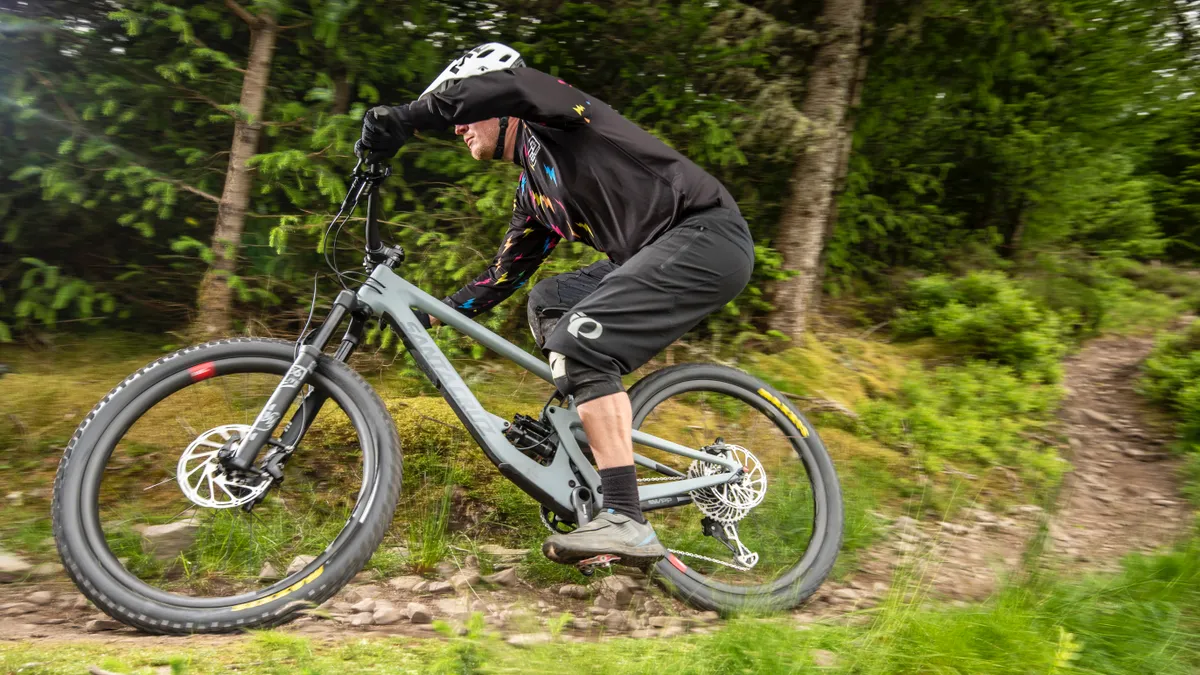
This stability through pedalling also helped drive the bike forwards on flatter trails. It doesn’t have quite the same drive that the new 5010 has, but that’s to be expected from a bike of this nature. That said, it’s not sluggish when you have to put the power down on traverses or through twisty singletrack.
Santa Cruz says that this lower link design is built for "all-out bump performance, support and traction," and I’d say that that is a fair assessment of how it performs.
I rode the bike on some of the steeper, lesser-known trails in the Tweed Valley in the Scottish Borders, thanks to the guiding from Go Where. The Tweed Valley is known for its rooty, swooping singletrack with plenty of steep cheekiness thrown in — the area held an EWS for a couple of years.
The Bronson simply did what it was designed to do. The back-end’s ability to happily deal with both occasional big and frequent small impacts meant that the rear wheel offers bucket loads of traction when the brakes are hauled on, keeping the rear tyre stuck to the floor, and plenty of security when pushing the bike deep into its travel.
It should be seen as a compliment that I never really noticed what the suspension was doing, save for the occasional slight kick through the pedals — it just dealt with the trail as it should. Grip and control when needed.
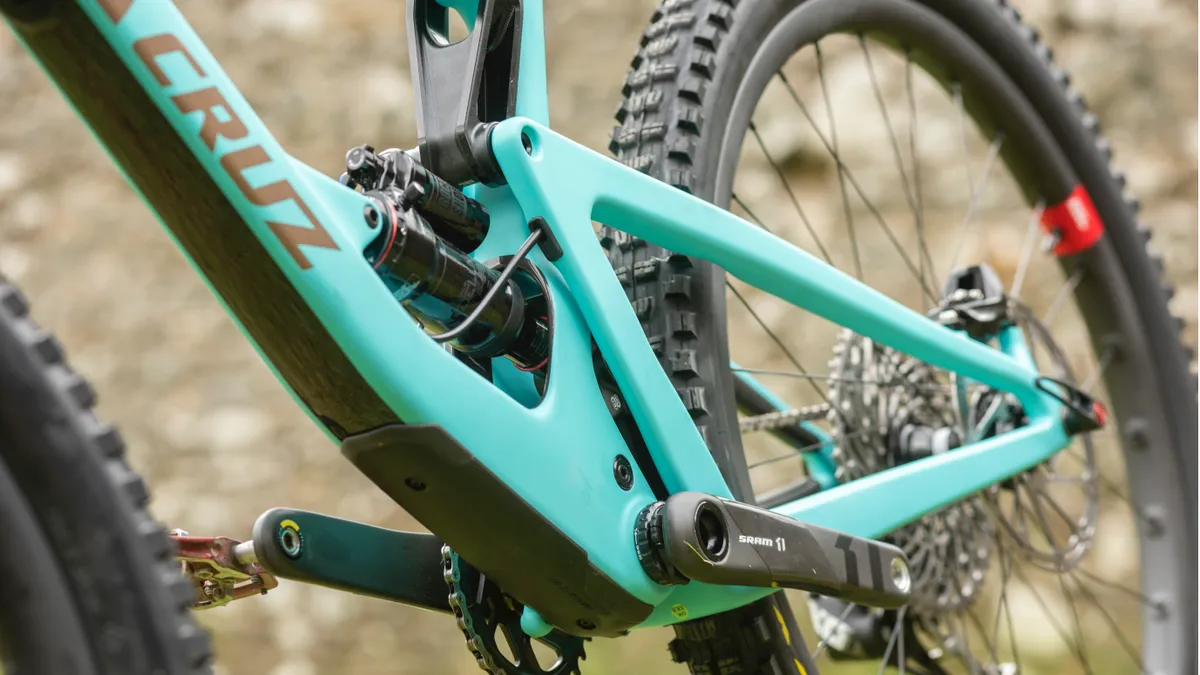
The frame is fairly stiff in its construction, but on my test ride I never found that off-camber traction was compromised because of this. If you push the wide, sticky tyres into the ground the bike carves corners nicely when required and you can still pump that suspension as you exit the corner, generating speed.
The relatively conservative in length chainstays mean the front end is easy to lift, and its relatively neutral geometry gives an agile feel to the bike. This isn't a super-long enduro race machine, but more a bike that thrives on tight wooded trails and fast rolling terrain, where you can pick it up and play around with what's presented under the tyres.
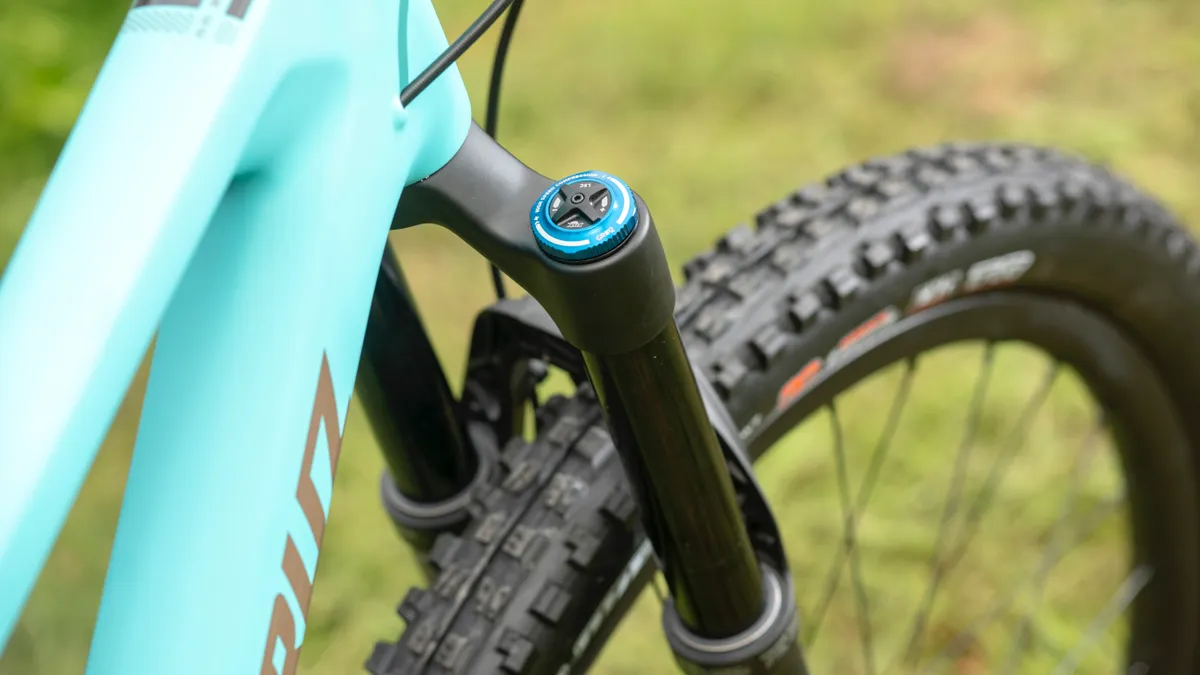
Adjustable shapes
As the Bronson is able to run either regular or plus tyres, there are two geometry settings: Hi and Low. As we were riding the 2.5/2.4in version of the bike we kept it mostly in the Hi setting (the Low setting is primarily there to maintain the bike’s position with the taller plus tyres).
It would be easy to look at the geometry chart and argue that a bike like this should, these days, have a longer reach: at 458.6mm in size Large it’s not particularly long.
The head angle of 65.4 degrees though is reasonably slack, and the 429mm chainstays are pretty average for a 27.5in wheeled bike. This gives a 1,214mm wheelbase, which is not mega short all things considered.
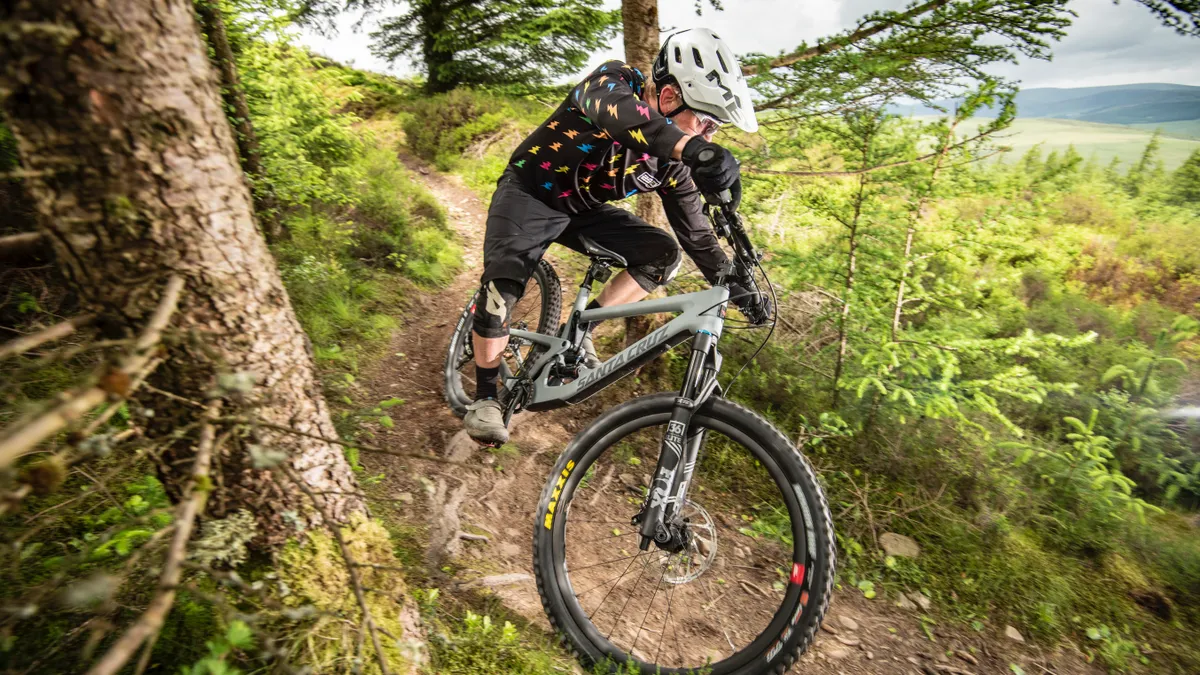
Fortunately, it’s still a very balanced feeling bike, and one that has a fun, whippy ride character. It would definitely suit those who look for a bike that’s playful and entertaining to ride, but those looking for a flat-out slugger of a bike to go warp-speed everywhere might want something with a bit more stability-giving length.
Connecting the dots
While the ride is the most important thing about a bike, it’s worth covering off the kit that is plugged on to the bike.
Santa Cruz has moved on from builds equipped with ENVE wheels and now use the company's own Reserve carbon wheels. On the non-plus Bronson I rode, I had the 30mm internal width hoops. They’re reasonably stiff, but their width gives decent levels of volume in the tyres, which negates some of this. They’re built on quality DT Swiss 350 hubs.
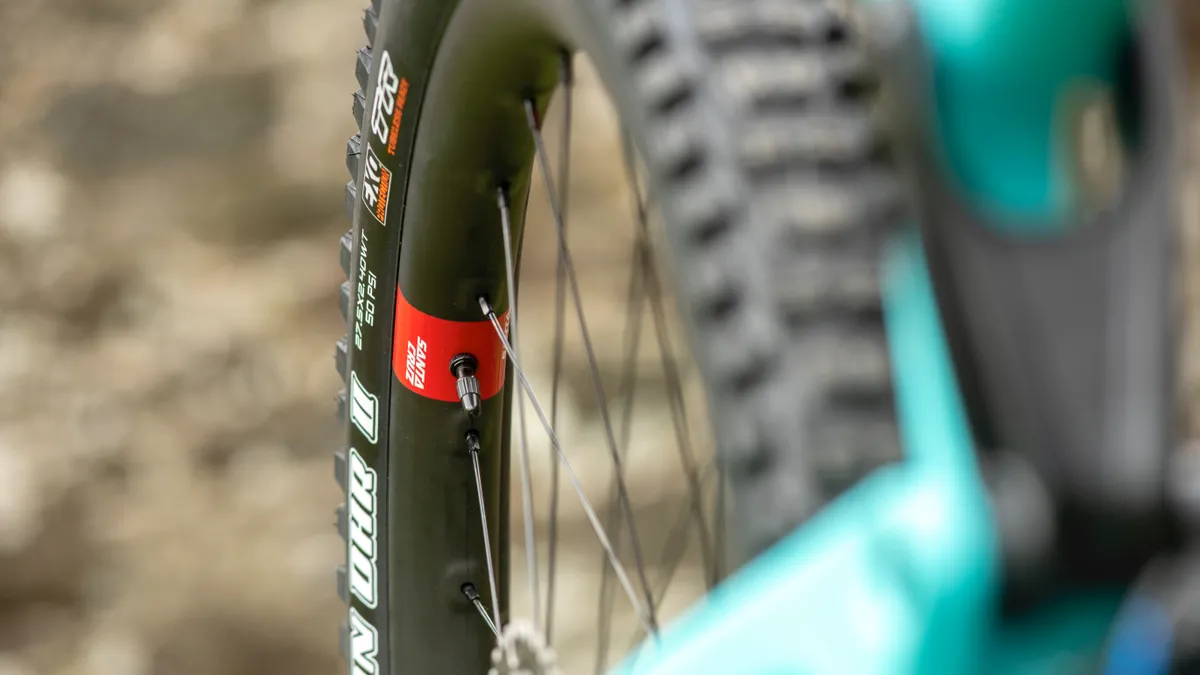
I’ve talked a lot about the frame’s suspension, and at the back this is controlled by a RockShox Super Deluxe RCT shock. It has a piggyback design for plenty of consistency on long alpine runs, as well as a compression lever to let you lock out the shock on long, smooth climbs. No complaints.
The fork is a Fox 36 Performance Elite model with 160mm of travel with the new Fit GRIP2 damper. In the past, I found the non-factory Fox forks didn’t feel as buttery smooth as their top-line siblings, but thankfully this is not the case now.
The new damper is supple and easily tuned, with the overall result being that the fork is a great addition to the bike. Yes, for £7,599 I would expect Kashima too, but you don’t buy a Santa Cruz for their value for money.
The rest of the kit is pretty standard but works well. SRAM’s Code RSC brakes are powerful and consistent in their performance, the Santa Cruz carbon bars are comfortable (though need rotating to just the right angle to get them there) and the WTB saddle works fine.
In the UK we’ll get a KS Lev Integra post, rather than the Reverb found in other territories.
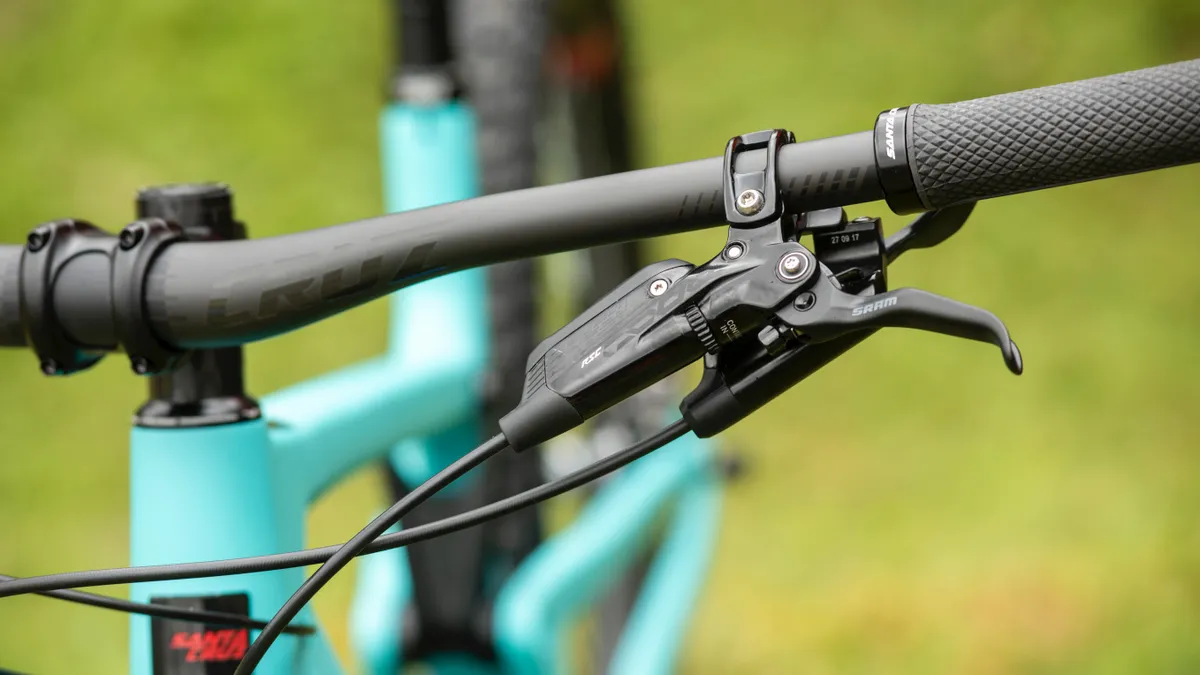
The extras
I didn't have to spend any time playing with the cable routing, so I won't comment on how easy it will be to replace cables through the neat-looking internal routing. What I can say though is that I'm a big fan of externally threaded bottom brackets, and the Bronson has such a feature.
Under the down tube there's a bolt-on frame protector, and there's a little shock fender hidden in the depths of the linkage. Fans of pack-less riding will appreciate the bottle cage mounts.
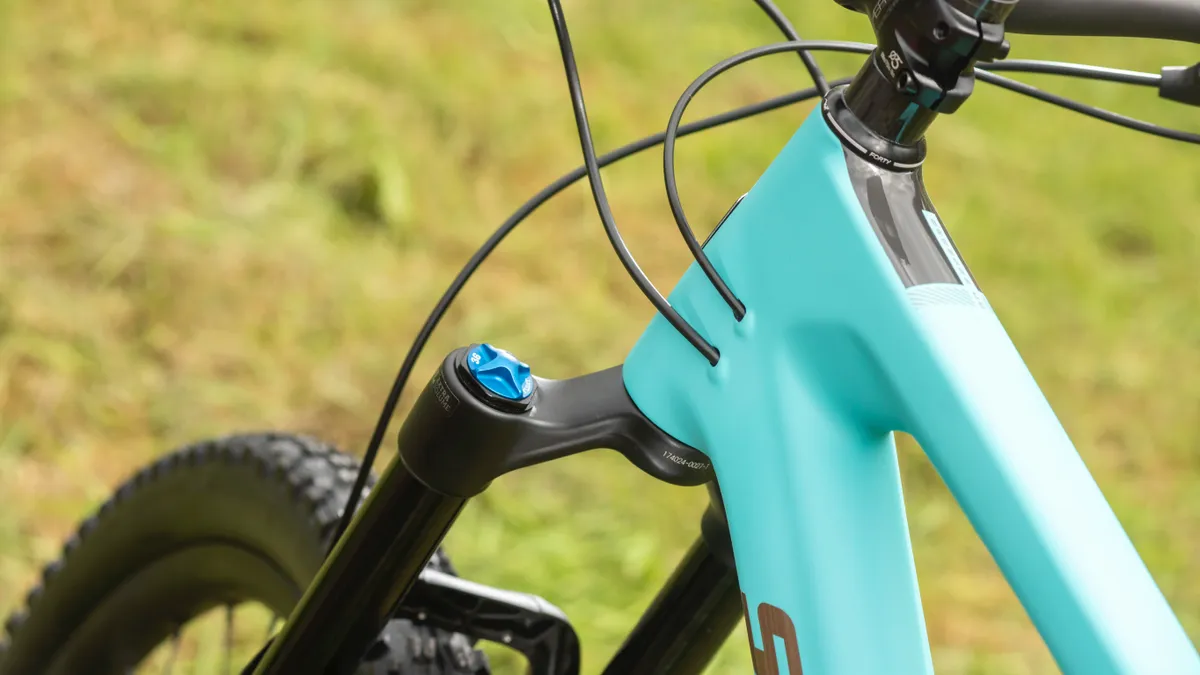
How does it compare to the competition?
The Bronson’s VPP suspension is designed to be descent focussed, but it still manages not to feel like you’re pedalling through soup. In that regard, it’s similar to bikes such as the Pivot Firebird.
They’re both perhaps a bit clinical too — very good at dealing with everything you throw at them, without making a fuss about it. They’re not boring to ride, but aren’t perhaps characterful either.
It’s a very different bike to the Bird Aeris 145 though. That’s a bike that really feels like it just wants to descend, even though its travel isn’t exactly long. The Bird sits deep into its travel and the super-long geometry just begs you to point it down something as steep as possible. Put them on a flatter, twisty track though and I’d pick the Bronson every time.
The Santa Cruz and Juliana story
Santa Cruz and Juliana are the same company, but the Juliana range of bikes is aimed at women. As such, the two brands share the same frames, and in general, the same build kits. The main differences come with the contact points (grips, saddles) and suspension tune (Juliana bikes tend to have a lighter tune).
The Juliana Roubion is the equivalent Bronson, and their X01 Reserve build comes in at the same price as the Bronson.
